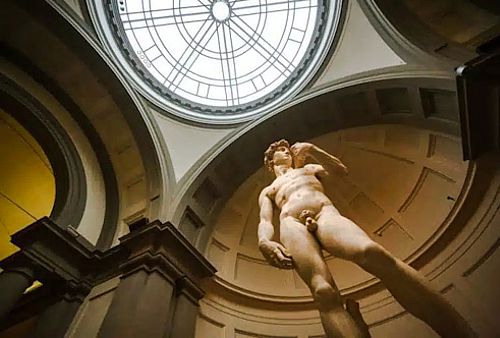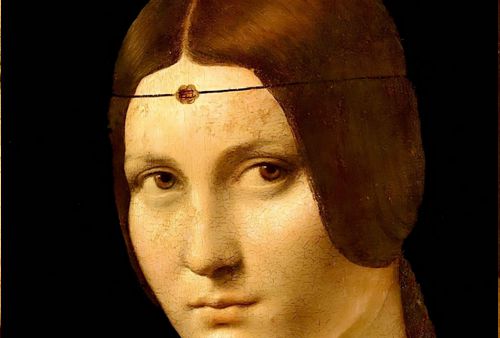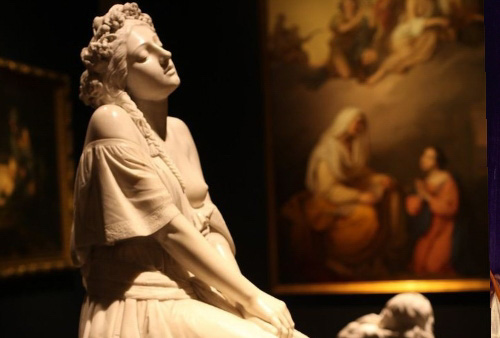Art Nouveau was a cry of rebellion. It emerged in the late 19th century as a vibrant response to academic art, historical rigidity, and the depersonalization of industrial production. More than an architectural style, it was an international movement that sought to inject beauty, sensuality, and life into every object and structure, from a building to a piece of jewelry or a spoon.
Characterized by asymmetry, the whiplash line, the use of wrought iron, and fluid, organic forms inspired directly by nature (flowers, stems, insects, and the female silhouette), Art Nouveau flourished intensely between 1890 and 1910 in Europe and the United States. It was a desperate search to unite art and life, making the everyday a total work of art (Gesamtkunstwerk).
A Global Network of Beauty: The Names of Art Nouveau
Although the term Art Nouveau (New Art) became popular in France and Belgium, the international nature of the movement led it to be known by different names depending on the region. All shared the same organic philosophy, but adopted local nuances:
- Modernismo: The term used in Spain, especially in Barcelona, with the genius of Antoni Gaudí at the forefront.
- Jugendstil: The German name, derived from the magazine Jugend (Youth). It tended to be more graphic and geometric than the French version.
- Secession: In Austria (Vienna), led by Otto Wagner, the style was more austere and focused on functionality and flat ornamentation.
- Stile Liberty / Stile Floreale: In Italy, derived from the Liberty Stores of London, highlighting its emphasis on floral motifs.
- Tiffany Style / Skonvirke: In the United States and Scandinavia, respectively, often centered on interior design and craftsmanship.
This rich diversity demonstrates that Art Nouveau was not a fleeting fashion, but a global aesthetic revolution that adapted to the culture of each city. Below, we explore ten of the most beautiful and representative buildings of this incredible era.
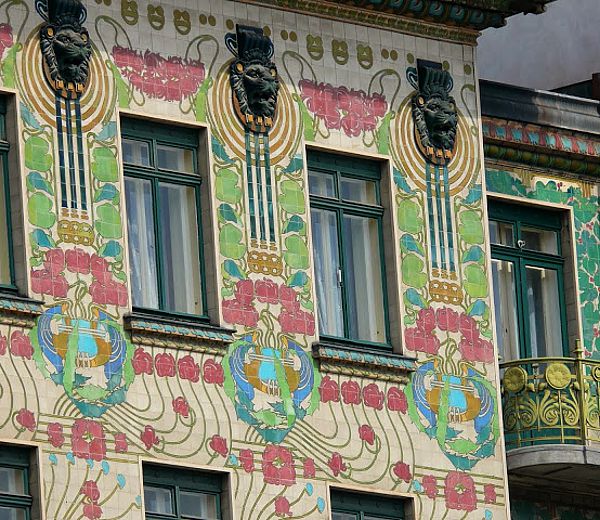
1. Majolikahaus: Vienna, Austria
Known as the flagship work of the Secession style in Austria, Otto Wagner's Majolikahaus (1898-1899) is a fundamental example of how functionality was not at odds with ornamentation. Wagner was a pragmatic architect who advocated for the use of modern materials, but also for beauty.
The facade is completely covered with small glazed ceramic tiles, known as majolica, which form an exuberant pink and green floral pattern. This use of ceramic cladding was not only aesthetically pleasing but also practical, as it facilitated the cleaning and maintenance of the building in an industrial city. Majolikahaus proves that Viennese Art Nouveau could be modern and vibrant without falling into exaggeration.
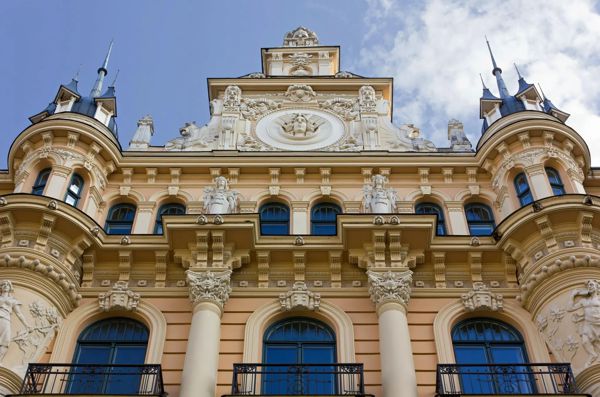
2. Alberta Street and the Splendor of Riga, Latvia
Riga is considered the world capital of Art Nouveau, housing the highest concentration of buildings in this style anywhere. While Alberta Street (Alberta Avenue) is the crown jewel, the city has over 800 examples. Much of the splendor is due to the architect Mikhail Eisenstein (father of filmmaker Sergei Eisenstein), who designed extravagant and theatrical buildings around 1901-1908.
The buildings on this street are a testament to the more decorative and often monumental style of Art Nouveau. Eisenstein played with masks, mythological figures, bold geometric motifs, and rich polychromy, using the facades to tell dramatic stories that contrast sharply with the austerity of other contemporary movements.
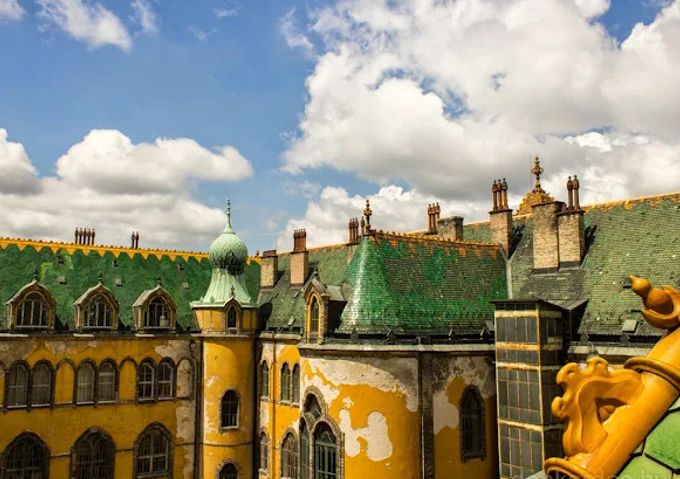
3. Museum of Applied Arts: Budapest, Hungary
Designed by Ödön Lechner and built between 1893 and 1896, this museum is a fascinating example of the blend between Art Nouveau and regional Hungarian traditions, incorporating Oriental and Islamic elements. Lechner sought to create a genuine Hungarian architectural language.
The structure is characterized by its vaulted roof, covered with bright green and yellow Zsolnay tiles (Hungarian ceramics), which give it an almost fairy-tale appearance. The horseshoe arches and terracotta floral decoration depart from the Art Nouveau design of Western Europe, making this museum a unique landmark on the European scene.
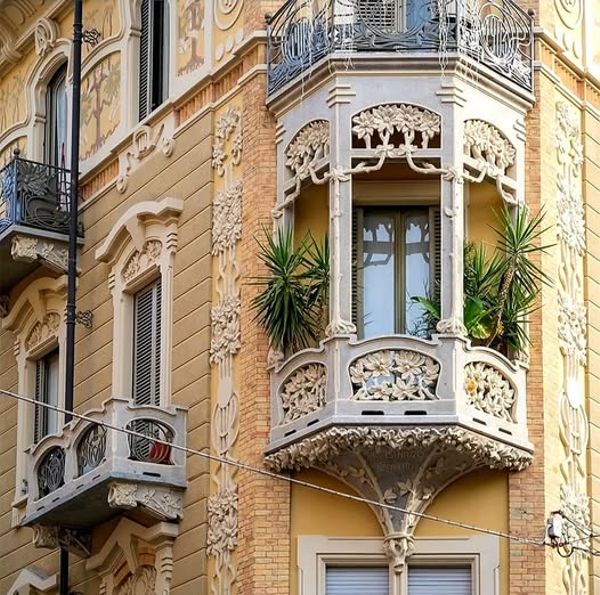
4. Cit Turin: Casa Tasca, Turin, Italy
In Northern Italy, Art Nouveau took the form of Stile Liberty (or Stile Floreale), which emphasized the grace of undulating lines and botanical decoration, visible in Casa Tasca in Cit Turin. Turin was a center of the Italian avant-garde, and this neighborhood is filled with elegant examples.
Casa Tasca, by architect Giovan Battista Benazzo, exemplifies the delicacy of the Italian style. Its facades are not as exuberant as those in Riga, but instead use whip-like balcony ironwork, soft floral stuccoes, and subtle geometric motifs to adorn the brick and stone structures, maintaining a sophisticated and bourgeois elegance.

5. Jugendstilsenteret: Ålesund, Norway
The Norwegian city of Ålesund is known as the "Art Nouveau city." A devastating fire in 1904 destroyed almost the entire city, which was quickly rebuilt with the help of the German Kaiser. Local architects chose Jugendstil for the reconstruction, blending it with regional Scandinavian styles.
The Jugendstilsenteret (Art Nouveau Center) is the city's museum dedicated to this style, located in a historic building designed by Hagbarth Martin Schytte-Berg. It showcases a more sober, functional, and Nordic version of Art Nouveau, but it is no less detailed, featuring asymmetrical towers, natural stone facades, and abundant ornamentation inspired by local flora and fauna.
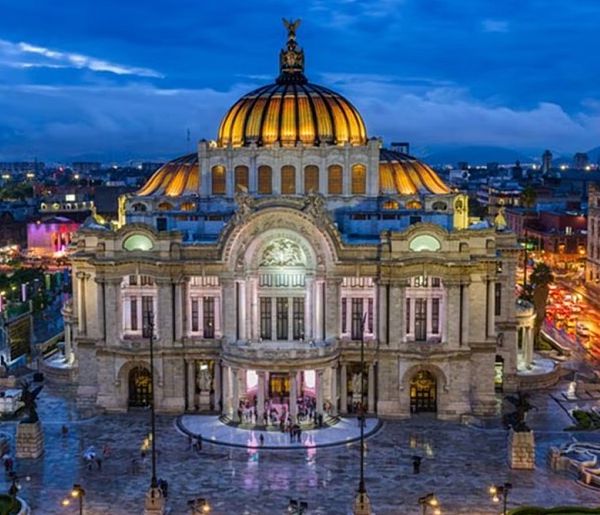
6. Palace of Fine Arts (Palacio de Bellas Artes): Mexico City, Mexico
The Palace of Fine Arts is considered the most important cultural center in Mexico City and an architectural jewel that bridges European Art Nouveau and Art Deco. Its construction began in 1904 by the Italian architect Adamo Boari.
The exterior is a magnificent example of Art Nouveau and Art Deco, with its imposing glass dome covering the lobby and the profuse use of marble and bronze. The structure took decades to complete, and the interior features a more Art Deco design, creating a fascinating time capsule that showcases the evolution of styles from the early 20th century, with organic details in the masks (mascarons) and the facade ornamentation.
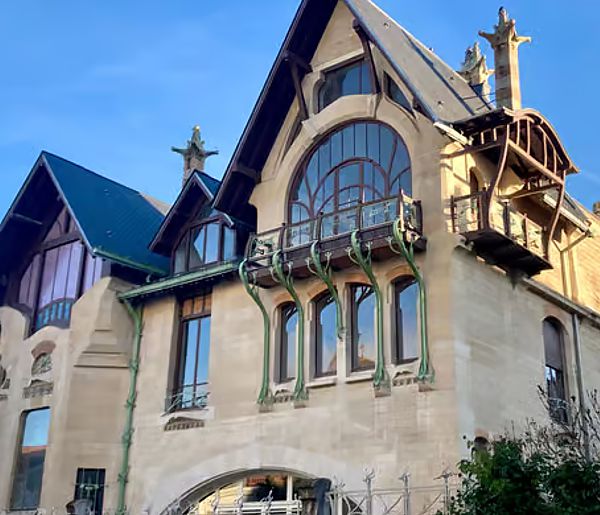
7. Villa Majorelle: Nancy, France
This residence, built for the famous cabinetmaker Louis Majorelle, is a masterpiece of French Art Nouveau, known as the Nancy School. Designed by Henri Sauvage around 1901-1902, it is one of the first examples of single-family homes built entirely in the new style.
Villa Majorelle is the ultimate expression of the concept of the total work of art. The structure, interior design, furniture, and decoration (much of it made by Majorelle himself) flow harmoniously, creating a unique space. Its facade mixes stone, brick, and wrought iron in vegetal forms that climb the balconies, demonstrating that Art Nouveau was as much about interior design as it was about the exterior facade.

8. The Little Singer Building: New York, United States
Art Nouveau in the United States, often overshadowed by the Beaux-Arts style, found expression in commercial buildings like the Little Singer Building (1904) in New York. Although its architect, Ernest Flagg, leaned towards Beaux-Arts, this 12-story wrought-iron structure reveals clear elements of the Art Nouveau movement.
The balconies, railings, and iron details twist into vegetal and curvilinear motifs. This approach demonstrated that Art Nouveau could not only be applied to luxury residences but was also adaptable to the functional architecture of skyscrapers and commercial buildings, using metal as a canvas for organic decoration.
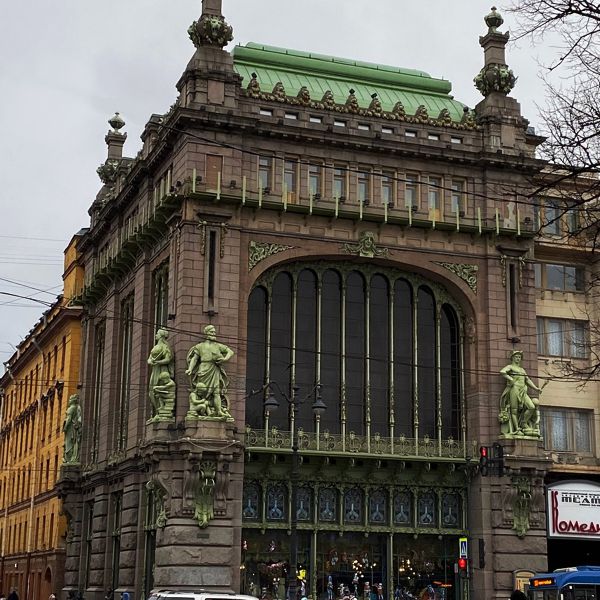
9. Eliseyev Emporium: St. Petersburg, Russia
Completed in 1903 by the architect Gavril Baranovsky for the wealthy merchant Grigoriy Grigorievich Eliseyev, this emporium is an impressive example of Russian Art Nouveau. It now houses luxury retail spaces and a theater.
The building stands out for its exuberant facade, rich in large windows, allegorical bronze and stone figures, and a theatrical use of ornamentation. The large windows allowed maximum visibility of the products inside, combining the innovative design of Art Nouveau with the modern commercial needs of the era.
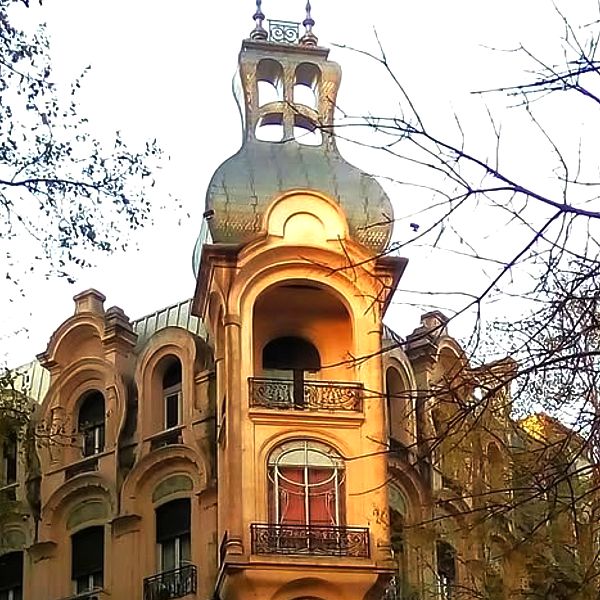
10. Hotel Chile: Buenos Aires, Argentina
Art Nouveau, also known as Art Deco in its later stages in the region, had a significant presence in Latin America. The Hotel Chile (Louis Dubois) on Avenida de Mayo in Buenos Aires is a notable example, although its original structure was altered by a fire and subsequent repairs.
Even with the losses, the structure maintains the proportion and intent of the style. Buenos Aires, in its golden age, embraced Art Nouveau in its theaters, hotels, and residences, utilizing wrought-iron balconies and curved windows to introduce movement and nature into the city's architecture.
A Living and Global Legacy
The beauty of Art Nouveau lies in its rejection of straight lines and its embrace of the living and the dynamic. Although its reign was brief (barely two decades), its impact was immense. The movement demonstrated that ornamentation could be both organic and functional, leaving a legacy that spanned from the monumental works of Gaudí in Barcelona (such as Casa Batlló, which could easily have been included in this list) to the most intimate details in furniture and jewelry.
Art Nouveau is not just a style of the past; it is a constant inspiration for those who seek to infuse art and nature into modern design.




